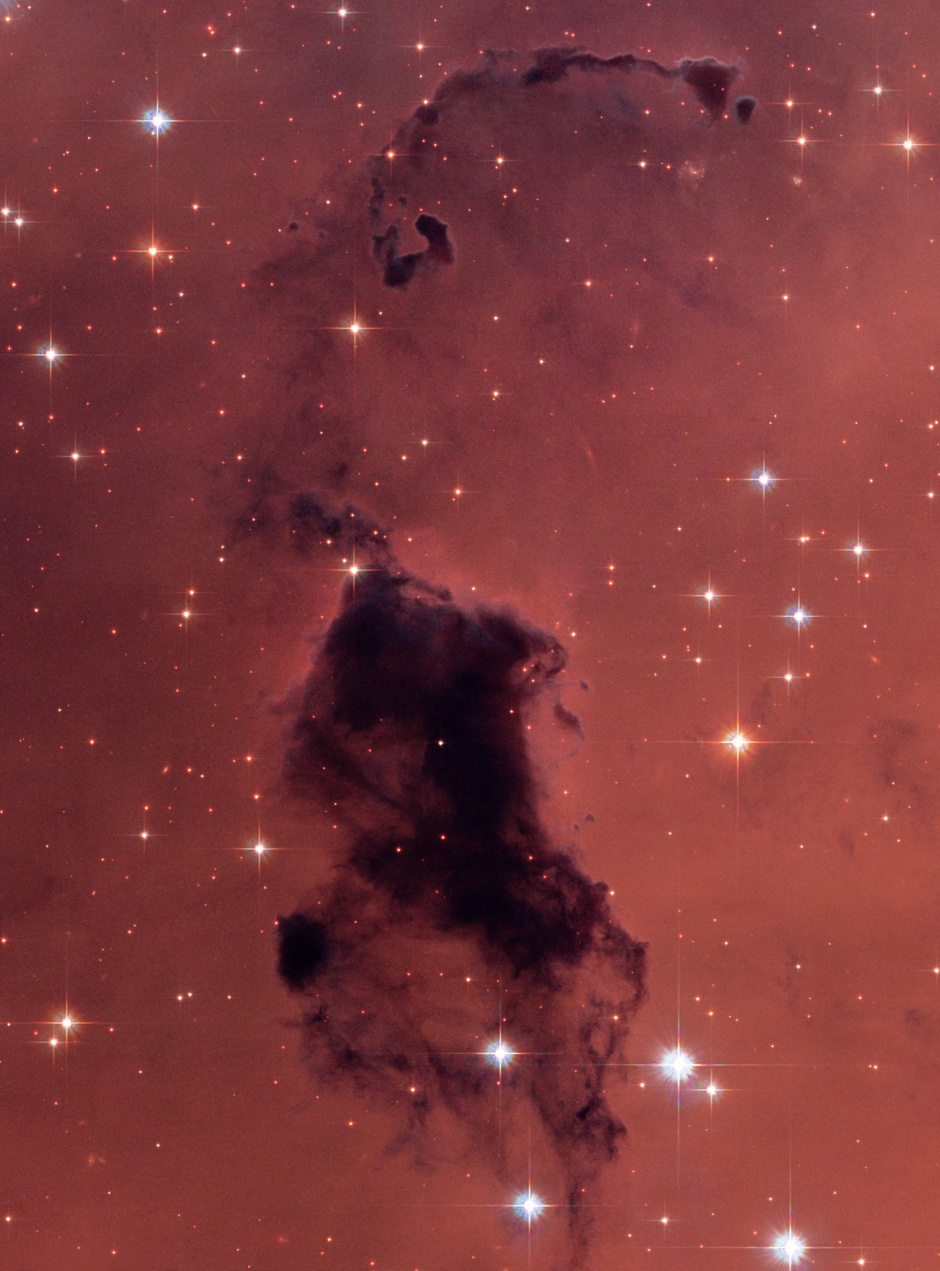봄을 맞이하는 연례 행사로 봄맞이 대청소를 실시하면
침대및이나 가구 뒤편에 숨어 있는 귀찮은 먼지뭉치들을 모두 찾아치워야 한다.
허블 우주망원경이 촬영한 이 사진은 이와 유사한, 우리 은하에 있는 짙은 먼지와 가스덩어리이다.
하지만 이 우주의 먼지들은 성가시게 청소해야할 먼지는 아니다.
이것은 우리 은하와 우주 전체에 퍼져있는 수많은 별들이 생성되는데 필요한 요소들이 뭉쳐있는 것이다.
가스와 먼지로 구성된 불투명하고 어두운 이들 먼지뭉치들은 'Bok globule'이라고 불리는데
이 사진은 별들이 형성되는 지역인 NGC 281 성운에서 뿜어내는 별빛을 흡수하는 Bok globue을 촬영한 것이다.
이 천체의 이름은 이들의 존재를 처음으로 예견한 천문학자 바트 복(Bart Bok)의 이름을 따서 지어졌다.
출처 : The European Homepage for The NASA/ESA Hubble Space Telescope
http://www.spacetelescope.org/images/html/opo0613a.html
원문>
Nearby Dust Clouds in the Milky Way
The yearly ritual of spring cleaning clears a house of dust as well as dust "bunnies", those pesky dust balls that frolic under beds and behind furniture. NASA/ESA Hubble Space Telescope has photographed similar dense knots of dust and gas in our Milky Way Galaxy. This cosmic dust, however, is not a nuisance. It is a concentration of elements that are responsible for the formation of stars in our galaxy and throughout the universe.
These opaque, dark knots of gas and dust are called Bok globules, and they are absorbing light in the center of the nearby emission nebula and star-forming region, NGC 281. The globules are named after astronomer Bart Bok, who proposed their existence in the 1940's.
Credit: NASA, ESA, and The Hubble Heritage Team STScI/AURA)
Acknowledgment: P. McCullough (STScI)
